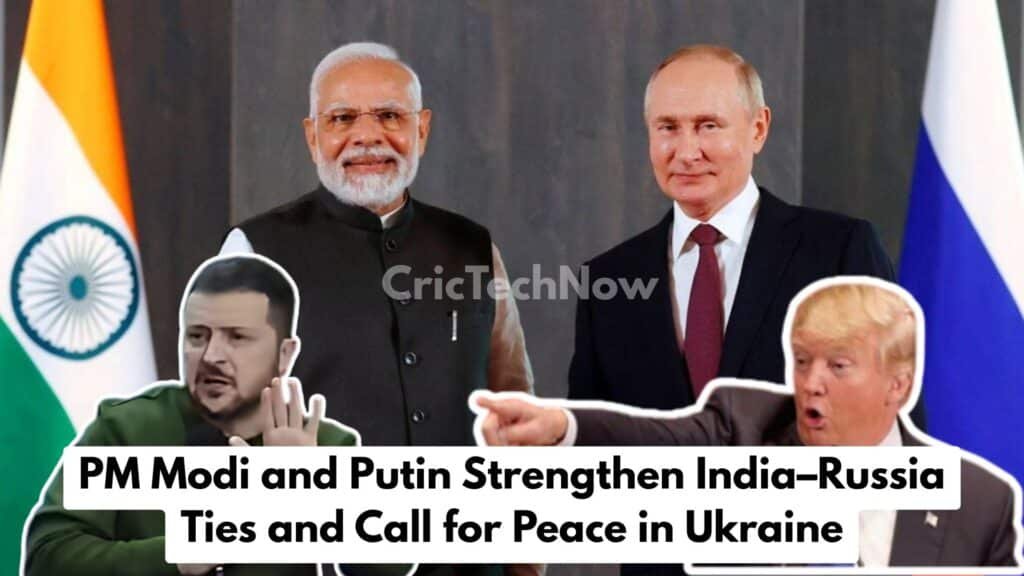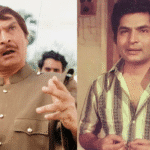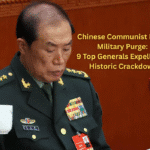Introduction
Prime Minister Narendra Modi spoke with Russian President Vladimir Putin in-depth over the phone on Friday, August 8, 2025. This strategic call came in the wake of U.S. President Donald Trump significantly upping tariffs on Indian imports, targeting India’s continued purchases of Russian oil. The conversation clarified the changing geopolitical landscape in South Asia and beyond while reaffirming the countries’ dedication to strengthening their Special and Privileged Strategic Partnership.
The Background: U.S. Tariff Escalation
Tariff Hike Triggered by Russian Oil Purchases
On Wednesday, August 6, 2025, President Trump signed an executive order imposing an additional 25% tariff on goods imported from India, citing New Delhi’s continued import of Russian oil.
This raises the total U.S. duty on specific Indian exports to 50%, one of the highest ever imposed on a trading partner. The new tariffs are scheduled to take effect 21 days post-order, approximately from August 27–28, 2025.
India’s Response: Vocal Criticism and Resolve
India has denounced the tariffs as “extremely unfortunate”, deeming them “unjustified” and contravening its sovereign right to energy security.
India would not compromise on farmers, fishermen, and the dairy industry, Prime Minister Modi said, stressing the importance of domestic welfare even at great cost.
Economists warn that these broad tariffs may jeopardize India’s export competitiveness and sabotage its development and “Atmanirbhar Bharat” agenda.
The Modi–Putin Call: Consolidating the India–Russia Partnership
Mutual Reassurance Amid Global Pressure
In the backdrop of rising U.S. pressure, on August 8, 2025, PM Modi and President Putin engaged in a substantive phone call where they discussed the Ukraine conflict, the trajectory of bilateral cooperation, and reinforced their long-standing special strategic partnership.
Modi thanked Putin for briefing him on the latest developments in Ukraine and reiterated India’s enduring advocacy for a peaceful resolution to the crisis.
A Strategic Visit on the Horizon
Modi also expressed his intent to host President Putin in India later this year for the 23rd India–Russia Annual Summit, signaling continued high-level engagement despite external pressures.
Broader Diplomatic Context
The phone call, which came after Russian First Deputy Prime Minister Denis Manturov and National Security Advisor Ajit Doval met in Moscow, highlighted the breadth and continuity of India-Russia strategic cooperation.
The Broader Geopolitical and Economic Impact
Export Sectors at Risk
Tariffs hitting as high as 50% have serious implications for India’s key export sectors. Textiles, gems, and jewelry are particularly vulnerable, while pharmaceuticals, smartphones, and energy exports are temporarily safeguarded.
Supply Chain Shifts and Fuel Price Pressures
Analysts predict that Reliance Industries may pivot to Middle Eastern oil, notably from Saudi Arabia and the UAE, if Russian supplies are curtailed due to trade complications.
Similarly, the State Bank of India warns that a halt in Russian crude imports could hike India’s fuel import bill by US$9–12 billion.
Diplomatic Realignments
Observers suggest growing U.S.–India trade tensions could nudge India closer to alternative global frameworks like BRICS, especially as New Delhi navigates these diplomatic headwinds.
ALSO READ: U.S. Imposes 50% Tariff on India Exports!
What Lies Ahead: Diplomacy, Summits, and Strategic Stability
Tariff deadline: The additional 25% levy is due by August 27–28, 2025, opening a window for negotiation or recalibration.
India–Russia Summit: If held as planned, the 23rd Annual Summit will be a potent symbol of bilateral resilience amid shifting global dynamics.
Geopolitical recalibration: India may continue deepening ties with Russia and other partners as it seeks to preserve strategic autonomy and safeguard its economy.
Conclusion
As U.S. tariffs escalate and shake established trade equations, India and Russia are doubling down on their strategic partnership. PM Modi’s call with President Putin on August 8, 2025 reaffirmed shared goals—from deepening bilateral ties to seeking a peaceful end to the Ukraine conflict. With the 50% tariff looming, how India balances its domestic priorities, energy needs, and global diplomacy will play a defining role in shaping its future trajectory.





